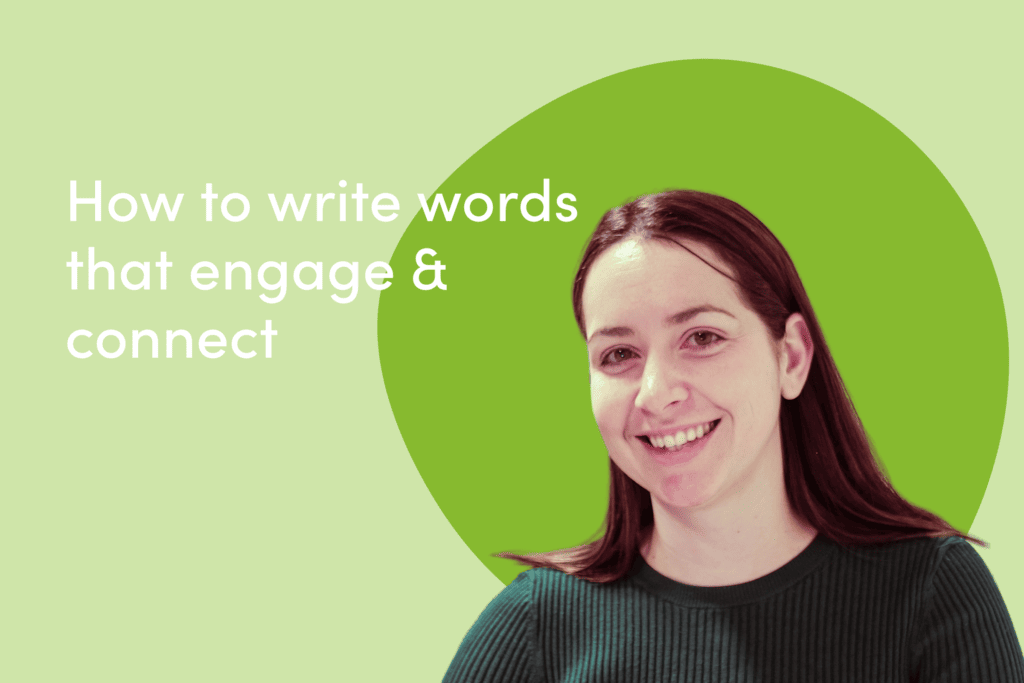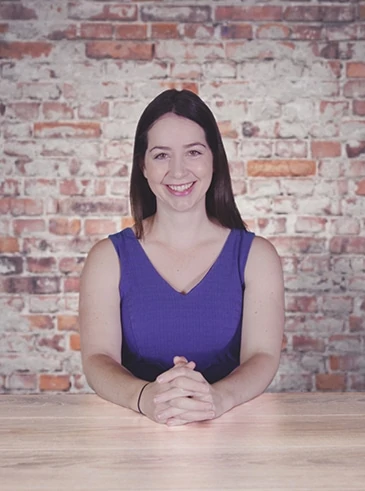In today’s world of fast answers, short attention spans, and a thousand brands all competing for that limited attention, it’s important to engage your website visitors quickly and effectively with compelling content.
You’ve probably heard phrases like “content is king” and “engagement is important”, but it’s one thing to know that you have to do a thing, and another to actually do it.
So, how do you write engaging website copy? We’ll help you, friend.
Here are our top tips on creating website content that resonates with your audience (and also drives them to action).
Table of Contents
ToggleUnderstand who you’re talking to 💬
The first thing you’ll want to do is make sure that you know who you’re talking to.
Great copy speaks directly to its reader. In order to engage your audience and resonate with them, you have to keep them top-of-mind as you write.
A good thing to remember is that when you’re writing website copy, It’s not as much about you or your business, as it is about your audience and how you’re of benefit to them.
Some important things to understand about your audience are:
- Who are they?
- What kind of language resonates with them?
- What are they looking for / what do they want?
- What keeps them up at night? What are their pain points, and how can you help?
- What are the things that they care most about, in relation to what you can give them?
The more you understand your audience, the better you can speak their language, say all the right things, and write the copy that will click with them.
Consider creating audience personas
If you have enough time and resources to dedicate to it, developing customer personas may be a good idea. They are essentially characters you develop that represent your main customer types (or ideal customer types), including their demographics, interests, motivations and more. It helps you to visualise who you’re talking to and helps to guide you in your content creation.
A good copywriter will often have a buyer persona in mind automatically when they write your website copy. For example, At Excite Media, we’ll ask you a bunch of questions before we begin writing your website content, that will help us form a picture of this customer persona for your brand.
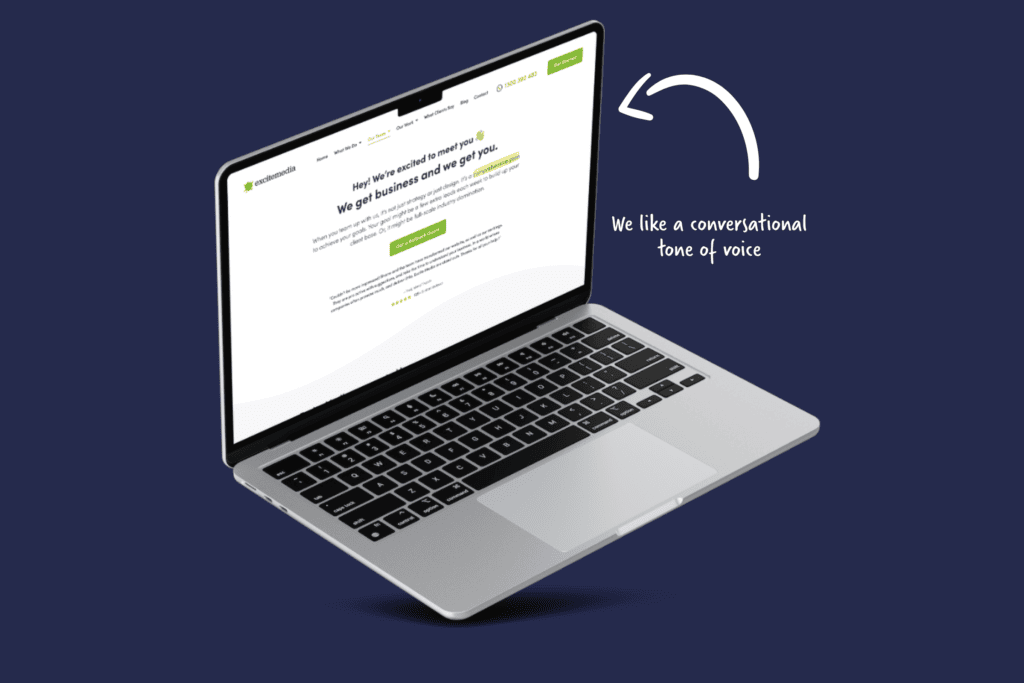
Decide on a tone of voice that works for your brand
In most cases, conversational tones win
Talk to your audience, not at them
Your website copy is written for your audience, so talk to them directly. Write in the first or second person (I/’we/you — I/you if you’re a one-man band, we/you if you’re writing for your business of more than one person).
Keeping it simple
In the world of web copy, less is often more. People are busy. They don’t have time to read through dense, complex text. So, keep it simple.
Use short sentences and paragraphs. Avoid jargon and complex vocabulary. Use bullet points or numbered lists to break up information. And most importantly, make your point quickly and clearly.
Basically, don’t over-complicate it.
Even if you work in a technical industry, it’s harder to read copy that is overly formal, or that uses technical jargon or long-winded descriptions. Easier to read and digest is easier to engage.
Unless you’re writing for an audience who are likely to look down on simple language, keep it light, easy and readable.
Find your USP and highlight it ✍️
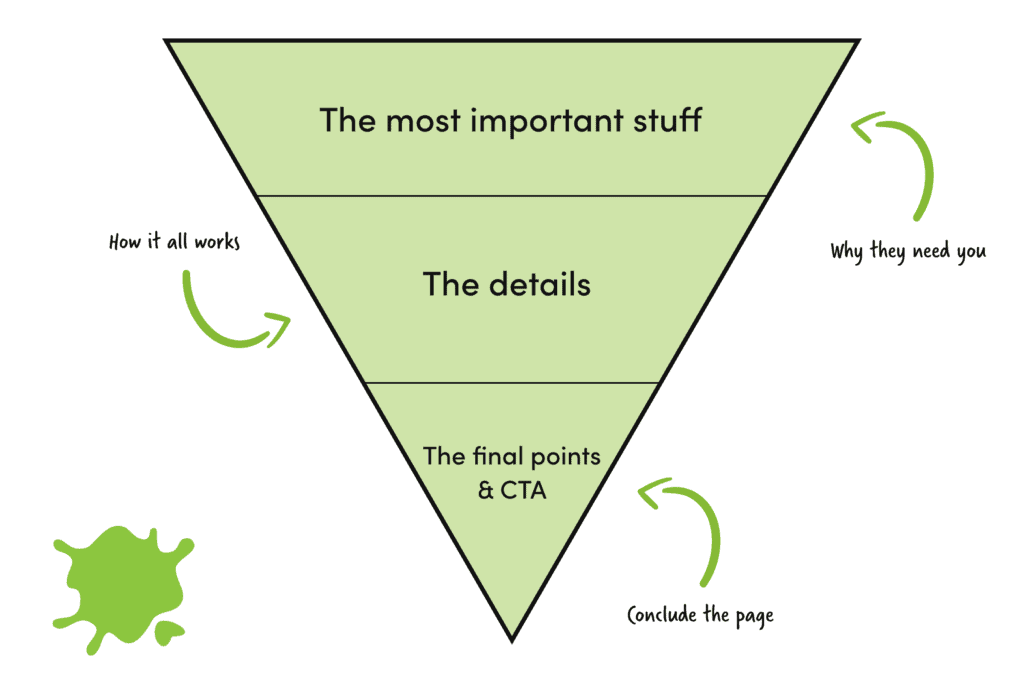
Put the most important stuff first
- What you do/offer
- What the key benefits are
- Your relevance (for example, your service location or who you service).
Focus on benefits over features ✨
A common mistake in copywriting is focusing too much on the features of a product or service. Let’s be honest: your audience cares more about the benefits. Specifically, they want to know about the benefits to them individually.
They want to know how your offering will improve their lives.
So, instead of focusing on what your product or service does, focus on what its benefits will be for the customer or client.
Does it save them time, save them money, reduce their stress or make their life easier in some other way? Does it solve the problem that they’ve come to the internet looking for a solution for?
If you provide excellent service, great quality, a fantastic price or a great turnaround time, it’s important to highlight this.
Sure, if you sell software or something else that is feature-heavy, it’s important to list your features too. But be sure to list the benefits that are a result of those features first. Remember, good website content is structured in order of importance to the reader. Get them hooked, then give them the details.
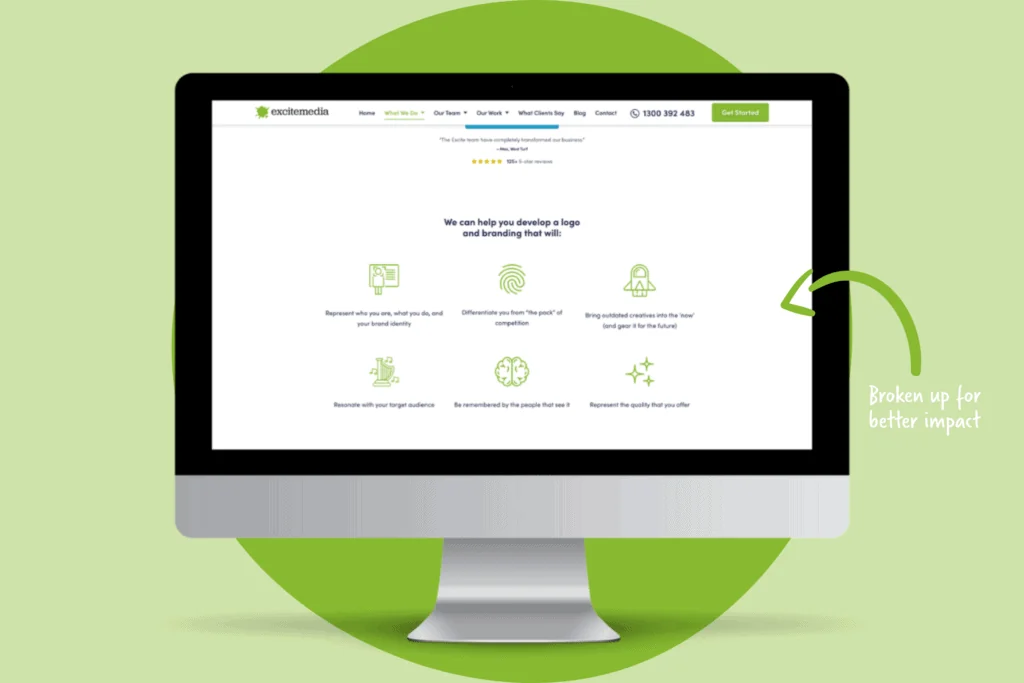
Structure your content 🧱
If you’re creating the copy for your whole website, it’s important to plan out what website pages you’ll have, what information needs to be communicated for each, and how to structure this best for the optimal user experience/user journey (hint: it’s wherever it makes the most sense to go).
A list of your website pages is called a sitemap, and it ‘maps’ out your website’s pages, and your menu structure/page structure, so you know everything you have to write. These will help you a lot, so start there.
Page structure: headings and subheadings
On the topic of structure, headings and subheadings on a web page are super important.
They’re the first thing your audience sees. They stand out, and when people are skim-reading your website content (which is actually most of the time), it’s the main thing they’ll see.
Headlines and headings are your chance to grab your reader’s attention and entice them to read on. That’s why creating strong and emotive headlines is crucial. If a headline is catchy and compelling, people are more likely to read what’s underneath it, or at least understand the key point of it. If the headline is self-explanatory, they might not read it, but they’ll probably remember the point.
Great headlines promise a benefit, create a sense of urgency, or evoke curiosity. They cut through the noise and speak directly to the reader. Wherever a headline or subheading can work in a key benefit for the reader, or create an emotive, action-inspiring feeling, then do so.
Headings are an important part of your website page’s structure and can improve readability and navigation within the page significantly. The H1 H2 H3 H4 structure makes it easy for people to find what they’re looking for on a webpage and also makes it easy to digest the information. Subheadings and similar structure items on a page tell you how the information relates to each other.
In short, headings and subheadings keep your audience engaged. They break up the text, making it more digestible, and provide a visual structure of your content, highlighting the key points at the same time.
The heading to rule all headings: your homepage H1
A quick word on the homepage in general
Other things for readability and structure
Your website content’s readability and skimmability is a crucial element of writing engaging website copy. It has to be super easy to read, interpret and digest.
People don’t love looking at walls of text, so it’s important to use structural tools to help them digest the content and engage with it.
- Use infographics where you can, especially if you are explaining a complicated concept that can be broken down better visually.
- Consider the visual presentation and structure of everything — would this work better as a visual table? A list?
- Make important bits of your text stand out as break-out pieces, in quote boxes, in a heavier font, or in another way that makes them stand out visually.
- Don’t be afraid to use dot-point lists. They make things much easier to read.
- Break up the content with images and other visual elements.
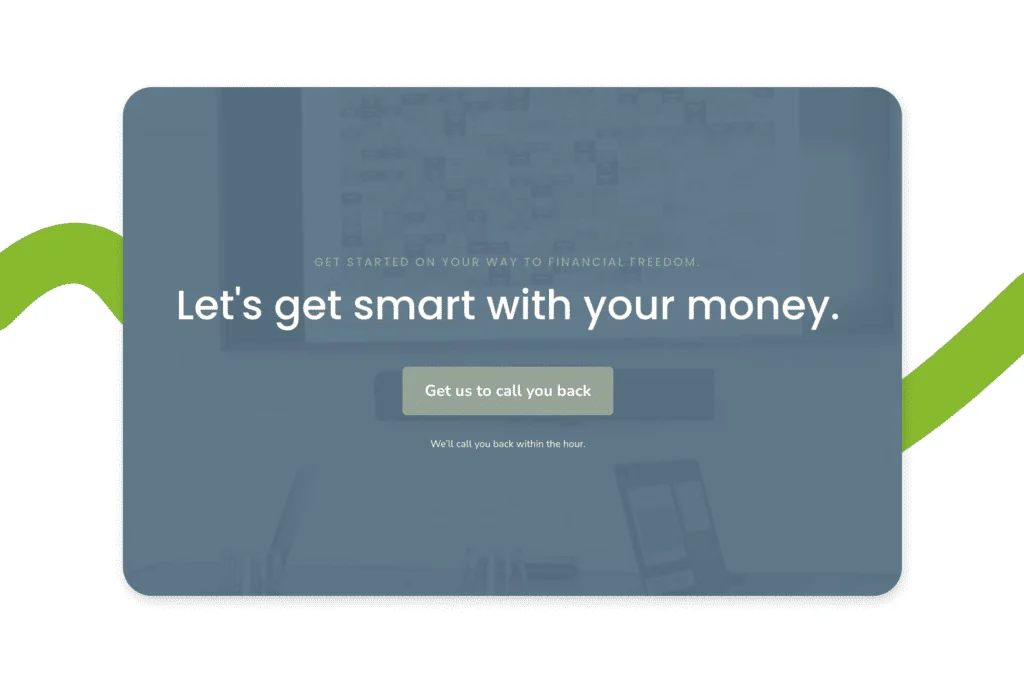
Inspire action: create compelling CTAs 🤝
- Talk to an expert
- Get a quote
- Get a free quote
- Get a quick quote
- Download your guide
- Get in touch
- Got a question? Ask us
Utilising SEO 🕸️
Writing website copy isn’t just about engaging the readers, it’s also about engaging the search engines (so you can get more readers to engage with your amazing writing).
Be sure to work in some core keywords that your audience is searching for, in a natural and relevant way.
That way, you’ll engage not just the people, but the search engines as well.
If you want to engage people, though, never sacrifice quality content for SEO. If you need help in this department, ask us — we’ll be happy to help.
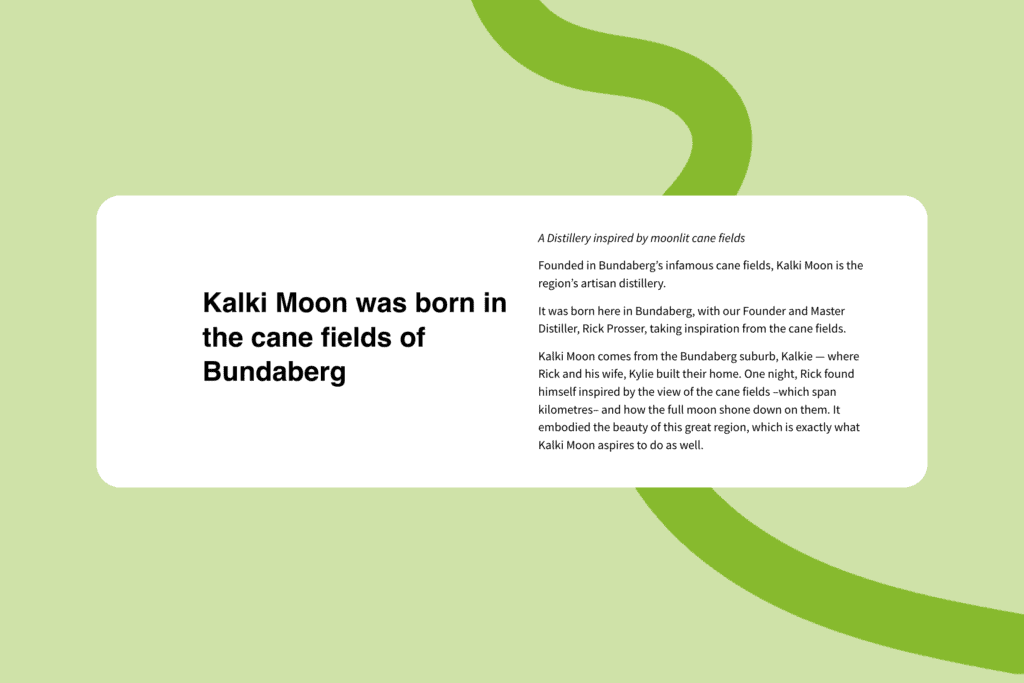
Use the power of storytelling 📚
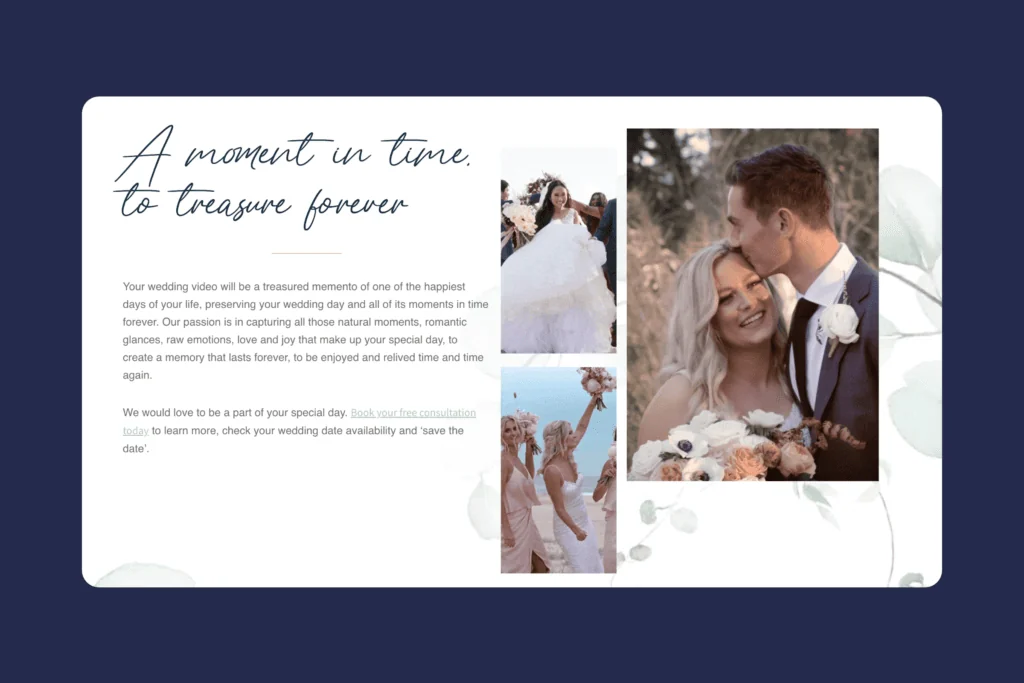
Use powerful, emotive words
Powerful and emotive words and writing styles are very engaging to audiences. Using dramatic writing styles for flair and drama can add emotive power to your writing. You can sometimes use unconventional writing styles, in favour of emotive writing. Remember, you’re not writing an academic essay. You’re writing skimmable, engaging website copy.
Don’t be afraid to use words that make people feel things (where appropriate, of course).
Emotive content sells.
(Also, don’t be afraid to add drama with one sentence ‘pars’ (paragraphs of one line) like this one above. They’re called orphan statements or orphan sentences, or sentence fragments, and their shortness draws attention to them. They have power. (See, we totally did it again)).
Proofreading and editing

The robotic elephant in the room: using AI in your copywriting 🤖
Something that’s been very topical recently is the subject of AI and its use in website copywriting (and copywriting in general). You’ve probably heard of Chat GPT and other competing AI technology.
Our advice on AI
Our advice when it comes to AI and copywriting is that it can be a tool that can help you work faster, come up with ideas, structure and more… but it also shouldn’t be relied upon.
Think of ChatGPT and AI as asking a school student who doesn’t have experience or knowledge in your field to write you some wording on a particular topic.
Sure, it will probably produce something that sounds okay at first glance, but:
- You’ll definitely have to fact-check it
- You’ll probably have to rewrite most of it
- You’ll need to adjust it so that it fits the tone and content that you want
- And you’ll need to edit it to make it sound more human
It’s definitely best to think of AI as a tool to help you write good copy, rather than a tool that will write good copy for you, or instead of you.
Here’s how it works
AI works off a huge amount of data, which goes up to a few years ago (different AI have different time databases, so they vary in the exact timing). So AI doesn’t know about the most current events) and writes word for word, based on the statistically most probable next word, taking into context the topic and its informational resources.
It’s important to remember that AI is not human, and it’s not an expert. It skims its database for information, but it doesn’t know how to discern between what’s credible and what’s not, it could be off in its interpretation of information, and isn’t human, so it doesn’t always sound human.
How AI is best used (in our opinion)
Basically, AI is a great tool to assist you in your writing, but it can’t replace a human writer and it can’t replace your manual work in writing the words, unless you want to run the risk of presenting incorrect information, producing content that doesn’t read as human, or be flagged as having AI-generated content and having your SEO position drop as a result.
AI is best used in the following ways:
- To give you some inspiration to get started, so you’re not starting with a blank slate
- To give you ideas on how to summarise some of your content
- To give you a starting point that you then rewrite
- To give you some ideas for structure or points that you can include
Basically, AI is a great tool to assist you in your writing, but it can’t replace a human writer and it can’t replace your manual work in writing the words, unless you want to run the risk of presenting incorrect information, producing content that doesn’t read as human, or be flagged as having AI-generated content and having your SEO position drop as a result.
A few words of caution:
An important thing to remember is that as AI generated content is quite new, there are still some things to figure out in the legal world regarding copyright. Using AI generated content and not rewriting it runs a risk of infringing on a copyright. The AI trawls its database to generate the information and so it could easily turn out some copy that directly copies some other sources.
So, It’s best to check.
Another important thing to keep in mind if you’re thinking about using Chat GPT or another AI to write content is the fact that search engines are getting better and better at detecting AI-generated content. This is only going to get more accurate.
It’s also important to remember that if you publish ‘facts’ that are generated by AI, and those facts are incorrect, it’s your reputation that’s on the line. So just be sure to fact-check everything, and edit it as needed. There’s nothing wrong with using AI to help you write better copy, but be sure to get the right balance of using it as a tool vs using it to do the whole job for you.
Now go forth and engage, dear reader
Creating engaging web copy isn’t about following a strict formula.
It’s about understanding your audience, delivering value, and being human. It’s about capturing attention, generating interest, creating desire, and inspiring action. And it’s about continually testing and improving your content.
With these strategies, we’re sure you’ll do a great job of crafting website copy that resonates with your audience and drives action. So go forth and engage those audiences!
Want us to do it for you? 💚
At Excite Media, we have an amazing team of in-house copywriters. They are really talented, and they have great hair and excellent fashion sense. They’re also terribly modest. And definitely “not” writing these compliments about themselves (wink).
If you’re looking at a new website, copywriting is something that we can take care of as part of your website project — just ask your friendly neighbourhood Excite Media Project Manager, or get in touch with us to ask about how we can help you with website copy for your existing website.

